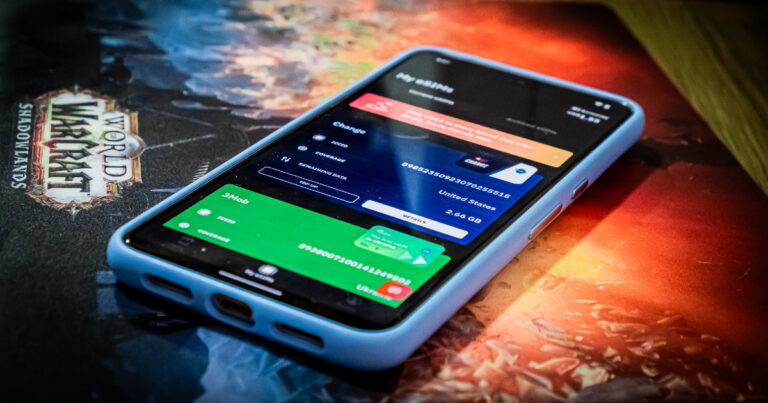Don’t head overseas with your Telstra-connected mobile plan before reading our guide to Telstra’s International roaming rates, availability and features.
Telstra international roaming: Is it your best option?
Heading overseas with your mobile phone was, at one time, a really risky process. Not so much because of loss or damage to the phone itself, but simply because so many of us lived in the sheer terror of the bill that might greet us on return to Australia’s shores, especially if your phone used even a single data packet.
These days your options when it comes to international roaming plans are quite wide (https://www.reviews.org/au/mobile/data-roaming-plans/) if you’re happy to change provider, but I’m going to guess that you’re reading this guide because you’re actually quite happy with your Telstra mobile plan, and just want to know if you’re going to have several key bodily organs to afford your mobile bill upon your return.
Short answer: No… mostly. But it’s worth knowing precisely how Telstra charges in differing ways depending on your precise mobile plan type and where you’re visiting – and how to get the best value out of a Telstra mobile plan while roaming.

Roaming on a Telstra Upfront Plan
Telstra swapped out most of its so-called postpaid plans a few years back in favour of what it calls “upfront” plans instead; here’s a quick summary of your current upfront plan options:
If your Telstra mobile plan is of the upfront variety, the simplest and most cost-effective way to roam if you don’t want to swap SIMs or enable a travel eSIM is to use Telstra’s “Day Pass” system.
Telstra sells Day Passes that enable calling and (for many destinations) data inclusions, split amongst three different “zones”. Here’s the practical breakdown of costs for each Day Pass zone:
At this point, you’re probably wondering how the zones work. Telstra’s deals with different networks in different countries means it drops them into different zone groupings.
Zone 1 is the easiest to explain, because it’s a group that contains New Zealand and… that’s it. Telstra could have literally just called it the “New Zealand Day Pass” and it would be easier to understand, really.
The Zone 2 group is much bigger, compromising: Argentina, Armenia, Austria, Bahrain, Bangladesh, Belgium, Brazil, Bulgaria, Cambodia, Canada, Chile, China, Croatia, Czech Republic, Denmark, Timor Leste (East Timor), Egypt, Estonia, Fiji, Finland, France, Germany, Greece, Guatemala, Hong Kong, Hungary, India, Indonesia, Ireland, Isle of Man, Israel, Italy, Japan, Kazakhstan, Latvia, Lithuania, Luxembourg, Macedonia, Malaysia, Mexico, Nauru, Netherlands, Nigeria, Norway, Panama, Papua New Guinea, Philippines, Poland, Portugal, Qatar, Romania, Russian Federation, Saudi Arabia, Serbia, Singapore, Slovak Republic, Slovenia, Solomon Islands, South Africa, South Korea, Spain, Sri Lanka, Sweden, Switzerland, Taiwan, Thailand, Tonga, Turkey, UAE, UK, Ukraine, USA, Vanuatu and Vietnam.
Travel to any of those destinations, and a day pass will run you $10 for 1GB of data usage plus unlimited calls and texts.
If your destination isn’t covered by Zones 1 or 2, it may fall into the Zone 3 group, though this is a much smaller subset of destinations, covering Gibraltar, Guernsey, Jamaica, Jersey, Malta, Peru and Samoa only. In those destinations a Day Pass will still run you $10, but only cover calls, not data.
Activating the Day Pass functionality is simple enough; within the My Telstra App go to the Services Tab, then your eligible plan, then Extras and finally International Roaming. From here if you toggle “International Day Pass” to the on position, it will then automatically apply a Day Pass rate for any day where you use data (where available) or make calls or send texts while travelling.
If you’re on an upfront plan, then Day Passes are your only international roaming option that you’ll see in the My Telstra app, which does mean that if you’re travelling to a destination not covered by Zones 1-3, you’ll have to switch to a local SIM or travel SIM option in your destination of choice.

If you're not quite sold on what your current provider has to offer when it comes to roaming add-ons then Airalo is a great way to stay connected when you're traveling abroad.
Roaming on a legacy Telstra Postpaid plan
Given how long ago Telstra announced its flip to Upfront plans, the odds are pretty good that you’re no longer on a true postpaid Telstra plan. But if that’s still you, you can also access Telstra Day Passes for international roaming. There are some differences in play, however. Zone 1 is still $5 a day and still just New Zealand.
The Zone 2 country list for non-upfront customers differs, comprising Argentina, Armenia, Austria, Bangladesh, Bahrain, Belarus, Belgium, Brazil, Brunei, Bulgaria, Cambodia, Canada, Chile, China, Colombia, Croatia, Cyprus, Czech Republic, Denmark, East Timor (Leste), Ecuador, Egypt, Estonia, Fiji, Finland, France, Germany, Greece, Guatemala, Hong Kong, Hungary, India, Indonesia, Ireland, Isle of Man, Israel, Italy, Japan, Kazakhstan, Laos, Latvia, Lithuania, Luxembourg, Macau, Macedonia, Malaysia, Mexico, Nauru, Netherlands, Nigeria, Norway, Panama, Papua New Guinea, Philippines, Poland, Portugal, Qatar, Romania, Russian Federation, Saudi Arabia, Serbia, Singapore, Slovak Republic, Slovenia, Solomon Islands, South Africa, South Korea, Spain, Sri Lanka, Sweden, Switzerland, Taiwan, Thailand, Tonga, Turkey, UAE, UK, Ukraine, Uruguay, USA, Vanuatu, Vietnam.
However, there are no Zone 3 country options if you’re not on an upfront plan. You can alternatively opt for PAYG data rates, but Telstra notes that these are expensive – and they’re not wrong! Data on PAYG terms is $3 per MB. That’s MB, not GB, which means even smaller communication sessions could cost you a packet, as could any calls or texts.
Simply put, PAYG is a terrible value deal for anyone, and you’d be far better off with a travel eSIM or local SIM in any international destination by a very wide margin if a Day Pass isn’t going to work for you.
Roaming on a Telstra Prepaid plan
Telstra offers a variety of prepaid plans for customers who prefer a fixed spend, though with the shift to upfront plans the differences about when you actually pay aren’t all that different.
What is different is the way that international roaming works for Telstra prepaid customers. If you’re on a prepaid plan, instead of day passes, you opt to buy prepaid International Roaming Packs that cover 3, 7 or 14 day periods across a range of international destinations.
All packs are purchased through the My Telstra app, and Telstra advises that it’s best not to actually purchase the packs until you land in your destination country, as they kick into gear and the clock starts ticking as soon as you purchase them.
The eligible country list is smaller than those of the upfront day pass roaming deals, comprising Austria, Canada, China, Croatia, Czech Republic, Denmark, Fiji, France, Germany, Greece, Hong Kong, Hungary, India, Indonesia, Israel, Japan, Malaysia, Netherlands, New Zealand, Norway, Papua New Guinea, Philippines, Poland, Portugal, Qatar, Republic of Korea, Singapore, Sri Lanka, Sweden, Taiwan, Thailand, Turkey, U.S.A. , United Kingdom and Vanuatu only.
While it’s constrained by countries, the lower cost and longer expiry of Telstra’s international roaming packs can make them a great value buy if your data needs are moderate. A little Google Maps usage (or preloading maps for offline use, alongside some downloaded music and the like) and it’s quite feasible to get by on the $15/7 day plan for far less than 7 days on a Day Pass outside Zone 1 on an upfront plan would cost you!
Related Articles




